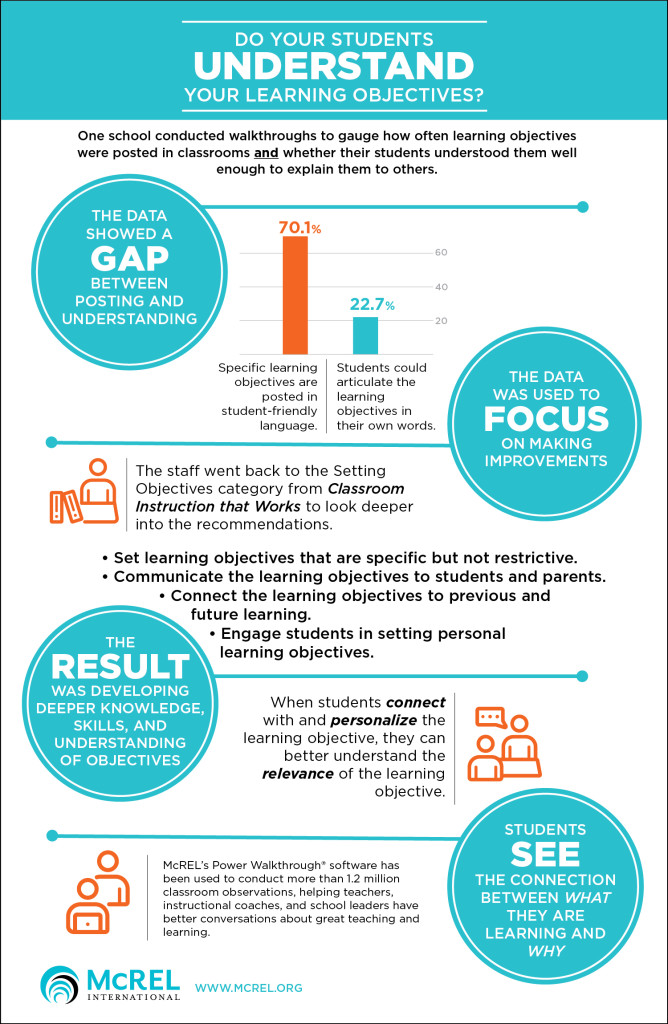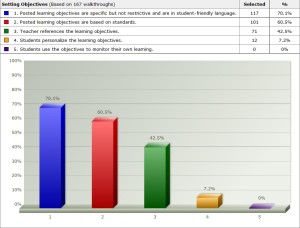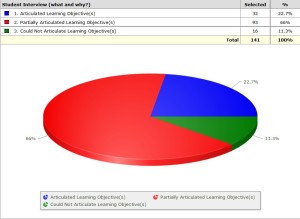For five summers as a teenager growing up in Iowa, I worked as a corn detasseler, walking up and down rows and rows of corn, finding each tassel, grabbing it, pulling it off, and throwing it to the ground. When I applied for the job, I didn’t know why the corn needed to be detasseled, I only knew that I would earn $3.35 per hour. After I was hired and given good direction, I learned that it was extremely important for me to do my job correctly or the plants would not cross-pollinate and the crop would fail. While this might seem like a simple objective, it made my job more meaningful and provided me with both the information and motivation I needed to help the crops flourish.
Similarly, our students need to have clear objectives in the classroom so that they understand what they should be learning and why it is important.
It’s crucial that teachers communicate clearly with students about learning objectives. In the Framework for Instructional Planning found in the second edition of Classroom Instruction that Works (CITW) (2012), Setting Objectives is one of the non-negotiables within the first component, Creating the Environment for Learning. CITW offers four recommendations for setting objectives:
- Set learning objectives that are specific but not restrictive.
- Communicate the learning objectives to students and parents.
- Connect the learning objectives to previous and future learning.
- Engage students in setting personal learning objectives.
To gauge how well this strategy is being used in classrooms, many schools use our Power Walkthrough classroom observation system, which has templates for the nine CITW strategies and other instructional goals. Let’s look at a real-life example from a school that tracks learning objectives during their informal observations.
In Figure 1, you can clearly see that this school’s teachers are posting objectives 70.1% of the time, and, 60.5% of the time, those objectives are based on standards. As an instructional coach or principal at this school, while looking at this data, you would presumably be pleased with how the teachers are committed to the Setting Objectives category. In providing feedback to your teachers, you might mention that they should take the time to reference the objective throughout the lesson so that students clearly understand what they should be learning. And you might advise them to help students become invested in personalizing the objectives to understand why they’re learning the content, and then teach them how to monitor their learning.
But, what Figure 1 doesn’t reveal is how well students actually understand and relate to the learning objectives.
To determine this, McREL recommends interviewing students during classroom walkthroughs, asking them (in student-friendly language) to state the what and why of the assigned task.
Again using Power Walkthrough, when the school did this, they found that too many of their students struggled to articulate the learning objective (see Figure 2). This was extremely valuable data that sparked collaborative conversations to determine the cause of the disconnect and what could be done to improve.
When students connect with and personalize the learning objective, they can better understand the relevance of the learning objective.
Just as it benefited me all those years ago to see the connection between detasseling the corn and the success of the crop, so too will students benefit when they understand the connections between what they are doing in class, what they are learning, and why they need to know it.
How are you going to motivate your students to make learning relevant to their lives and become invested in the why?





Yes, it’s about the ‘why’ and building relationships to be able to get there